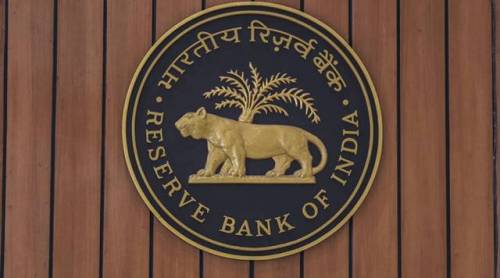RBI launches Digital payments index to track transactions
RBI-DPI includes five general standards that allow measuring the depth and penetration of digital payments in a country in different periods of time. The RBI sa
- by B2B Desk 2021-01-04 06:33:57
The Reserve Bank of India (RBI) said on January 1 that it had created a Composite Digital Payment Index (DPI) to capture the extent to which payments were digitized across the country. This is an important advance given the strong recovery in digital transactions seen in the recent past.
RBI-DPI includes five general standards that allow measuring the depth and penetration of digital payments in a country in different periods of time. The RBI said that these parameters are facilitators of payment and payment infrastructure - demand-side factors and payment infrastructure - supply-side factors, payment performance, and consumer focus.

Each of these parameters has sub-criteria that in turn consist of different measurable indicators. The main sub-parameters of each parameter are available here. The central bank said that the Reserve Bank of India (RBI-DPI) was established from March 2018 as the base period.
The DPI score for March 2018 is set at 100. The DPI for March 2019 and March 2020 stands at 153.47 and 207.84, respectively, indicating significant growth. Going forward, the RBI-DPI will be published on the RBI website semi-annually starting in March 2021, according to the central bank. In February this year, RBI first announced the DPI launch plan.
The Reserve Bank of India and the government have been pushing for digital transactions over the years to achieve greater transparency and efficiency in the financial system. In this sense, launching DPI is an important step.
In recent months, digital transactions have skyrocketed significantly.
Digital transactions pick up
According to the latest RBI data, digital transactions showed a sustainable rebound and momentum captured in November 2020, driven by both wholesale and retail transactions.
In the retail sector, domestic electronic fund transfer (NEFT) transaction volume grew 24.6 percent year-on-year in November 2020, well above growth (13.9 percent) in the previous month. RBI data showed that the growth in the value of the NEFT transaction in November 2020 (27.9 percent) was higher than that recorded in October 2020 (20.1 percent).
In terms of value, UPI transactions occurred at Rs 3.9 crore, while IMPS transactions occurred at Rs 2.76 crore. Furthermore, the data showed that LBTR transactions of Rs 79.8 crore and NEFT of Rs 22.18 thousand crores were reported.
UPI transactions rose to nearly 2.2 billion in November 2020, while maintaining momentum in terms of volume and value. Among other digital transaction patterns, National Electronic Fee Collection (NETC) remained on a strong growth path and Immediate Payment Service (IMPS) showed stronger growth in November 2020 compared to the previous month.
In the wholesale sector, Real Time Gross Settlement (LBTR) transactions registered an acceleration in volume. Most recently, RBI made RTGS available 24/7 from 12:30 a.m. December 14.
Also read: Your Guide to Choosing Small Business Insurance-Business2Business

POPULAR POSTS
Loan EMIs to Drop as RBI Slashes Repo Rate - Full MPC December 2025 Highlights
by Shan, 2025-12-05 11:49:44
Zoho Mail vs Gmail (2025): Which Email Platform Is Best for Businesses, Startups, and Students?
by Shan, 2025-10-09 12:17:26
PM Modi Launches GST Bachat Utsav: Lower Taxes, More Savings for Every Indian Household
by Shan, 2025-09-24 12:20:59
$100K H-1B Visa Fee Explained: Trump’s New Rule, Clarifications & Impact on Indian Tech Workers
by Shan, 2025-09-22 10:11:03
India-US Trade Deal Soon? Chief US Negotiator Arrives in Delhi as Talks Set to Begin Tomorrow
by Shan, 2025-09-15 11:54:28
Modi Meets Xi: Trump’s Tariffs, Strategic Autonomy, and the Future of Asia’s Power Balance
by Shan, 2025-09-03 06:40:06
Google Claims Gemini AI Uses Just ‘Five Drops of Water’ Per Prompt, Sparks Debate
by Shan, 2025-08-22 12:34:27
RECENTLY PUBLISHED

Pine Labs IPO 2025: Listing Date, Grey Market Premium, and Expert Outlook
- by Shan, 2025-11-05 09:57:07

The Agentic Revolution: Why Salesforce Is Betting Its Future on AI Agents
- by Shan, 2025-11-05 10:29:23

Top 10 Insurance Companies in India 2026: Life, Health, and General Insurance Leaders Explained
- by Shan, 2025-10-30 10:06:42

OpenAI Offers ChatGPT Go Free in India: What’s Behind This Big AI Giveaway?
- by Shan, 2025-10-28 12:19:11

Best Silver Investment Platforms for 2025: From CFDs to Digital Vaults Explained
- by Shan, 2025-10-23 12:22:46





 Subscribe now
Subscribe now 